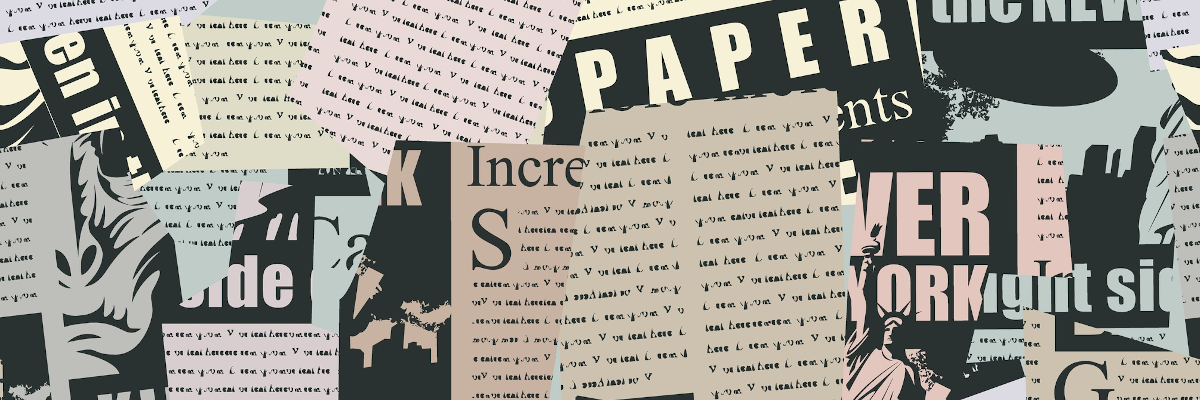
There is little that turns one off from religion more than corruption in the religious sphere. When one sees someone cheating who outwardly presenting as religious, the harm to religion is incalculable. It is the ultimate in chilul Hashem, causing others to disdain religion and even to hate G-d (see Yoma 86a). And when the dishonesty manifests in the religious sphere itself, the chilul Hashem is compounded many times over. One laments how a butcher can substitute treif meat and sell it as “kosher”, or how one can sell a non-kosher mezuzah or tefillin to an unsuspecting (and usually non-observant) customer. For better or worse, this is not a new phenomenon. There really is nothing new under the sun—especially when it comes to money.
Because many of the tzitzit retailers were, sadly, untrustworthy, the rabbis decided that at times, we must effectively do away with the mitzvah of tzitzit. “Rav Elazar the son of Tzadok said: Alas, whoever puts techelet in his [linen] tzitzit in Jerusalem causes astonishment” (Menachot 40a).
The mitzvah of tzitzit requires that one attach fringes of lavan, white and techelet, blue, to four-cornered garments. The techelet, by definition, is a woolen string and hence, it should be forbidden (at least for men[1]) to wear a four-cornered linen garment, as the combination of wool and linen would be a violation of the prohibition of sha’atnez. And such is, in fact, the view of Beit Shammai.
Beit Hillel disagrees, noting that the prohibition of sha’atnez is immediately followed by the mitzvah of tzitzit (see Devarim 22: 11-12), teaching the principle that a positive command—in this instance, tzitzit—pushes aside a negative command, in this instance sha’atnez. However, this law was not well-known amongst the masses who, seeing wool and linen being worn by observant people, might themselves then wear garments containing sha’atnez without realizing that the case of tzitzit is an exception. Hence, the rabbis forbade the wearing of techelet[2] in Jerusalem[3]. The Gemara then asks, why could they could not educate the people that one may wear wool and linen if, and only if, one is fulfilling the mitzvah of tzitzit? The Gemara responds that we are afraid of dishonest merchants who would substitute cheaper indigo for the much more expensive techelet and in fact, one would thus be wearing sha’atnez, albeit inadvertently, plain and simple. How tragically sad when one has to fear that one’s purchase of a religious item is anything but[4]!
While some may have used tzitzit as a quick way to make a (dishonest) buck, wearing tzitzit can be of great help in preventing sin. The Talmud illustrates how much so by way of a rather stunning story.
“Once a man who was most scrupulous in observing the mitzvah of tzitzit heard that there was a prostitute across the sea who charged 400 golden dinars[5]” (Menachot 44a). The unnamed man prepaid and scheduled an appointment. “She arranged seven beds for him, six of silver and one of gold. Between each and every one of them there was a ladder made of silver, and the top bed was the one that was made of gold”. As the prostitute lay naked on the bed of gold, the man began to undress. While doing so, his tzitzit “hit him in his face, and he went and sat on the floor”. She, too, went to sit on the floor, demanding to know “what defect he saw in her”. He responded by taking an oath proclaiming he had never seen a women as beautiful as she—the implication that this was not his first encounter with a prostitute is left unstated—but regarding the mitzvah of tzitzit, the Torah twice tells us that, “I am the Lord your G-d: I am the one who will exact punishment and I am the one who, in the future, will grant reward.”
The tzitzit were most successful in helping that "you do not follow your heart and eyes in your lustful urge” (Bamidbar 15:39). “She then said to him, ‘I will not allow you to go until you tell me: What is your name, and what is the name of your city, and what is the name of your teacher, and what is the name of the study hall in which you studied Torah?’ He wrote the information and placed it in her hand”. The prostitute was so impressed that she took her possessions—and at 400 golden dinars for a day’s work, they were substantial—and gave one-third to the government and one-third to the poor. Presumably, her payment to the government was for the taxes on undeclared income. One cannot give tzedakah to the poor with monies owing to others.
She then entered the Beit Midrash of Rav Chiya and asked—actually, demanded—that Rav Chiya convert her. He responded: “My daughter, perhaps you have set your eyes on one of the students”. She then handed him the piece of paper from the man—apparentaly a student in the yeshiva— and Rav Chiya, presumably after first converting her, responded, “’Go take possession of your purchase’. Those same beds that she had arranged in a forbidden fashion, she now arranged in a permissible fashion”.
No matter how pious we may be, we are all susceptible to sin. Yet we all have the ability to overcome our desire to sin, even at the last moment. It may be very expensive—surely, he did not expect a refund—and time consuming, but it is well worth it. In fact, sincere teshuva can make a major impact on others, even those who have spent a lifetime in sin. And at times, it is the simplest of things that can inspire us to do better. For some, it is the strings of the tzitzit, while for others it may be the Magen David around their necks, or a summer trip to Israel.
The Gemara concludes, “this is the reward given to him in this world; in the World to Come, I do not know how much”. We can never fully know the significance of our actions—but impact they do.
[1] Please G-d, in our next post, we will discuss why women are exempt from the mitzvah of tzitzit.
[2] This is based on the principle that when it comes to a positive mitzvah, “there is power in the hands of the Sages to uproot something from the Torah passively.” It is the same principle that allowed the Sages to forbid the blowing of the shofar when Rosh Hashanah falls on Shabbat.
[3] Why tzitzit would be forbidden in Jerusalem specifically is not explained. Perhaps Jerusalem is mentioned because it is the capital city, but the law is no different anywhere else. I would like to suggest that as the spiritual centre of Jewish life, it attracted a more pious population. Many halachic authorities rule that only a known G-d-fearing person should wear their tzitzit out. For regular people to do would be a display of yuhara, religious arrogance. Hence, the fear that people might wear sha’atnez was much more specific to Jerusalem. While I have zero evidence to support this theory—very possibly because it may be both anachronistic and wrong—the idea contained within is crucial. The more “religious” one is, the more one must be careful to ensure that others do not misinterpret one’s actions. If one’s mitzvot can lead others astray, how careful pious-looking people must be to avoid sin!
[4] The Gemara does note that one could theoretically test to see if the techelet was authentic. However, such testing was difficult to do and in any event, would be unable to determine if the techelet was made lishma, with proper intent to fulfill the mitzvah. Thus, the Gemara suggests that one purchase techelet only from someone known to be trustworthy (Menachot 42b).
[5] While it is often difficult to convert Talmudic coinage (the value of which evolved over time) into present-day values, suffice it to say that the value of a ketuva was 200 silver dinarim (also known as zuzim). With each gold dinar worth 25 silver dinarim, it is clear that only the very, very wealthy visited this prostitute.



